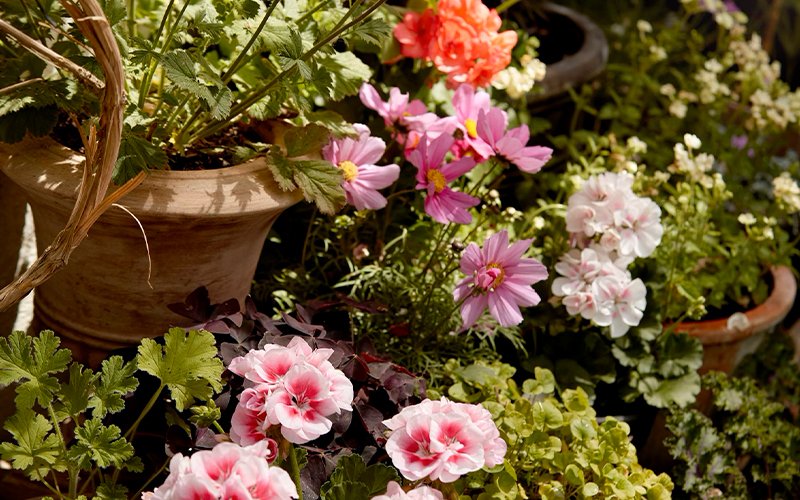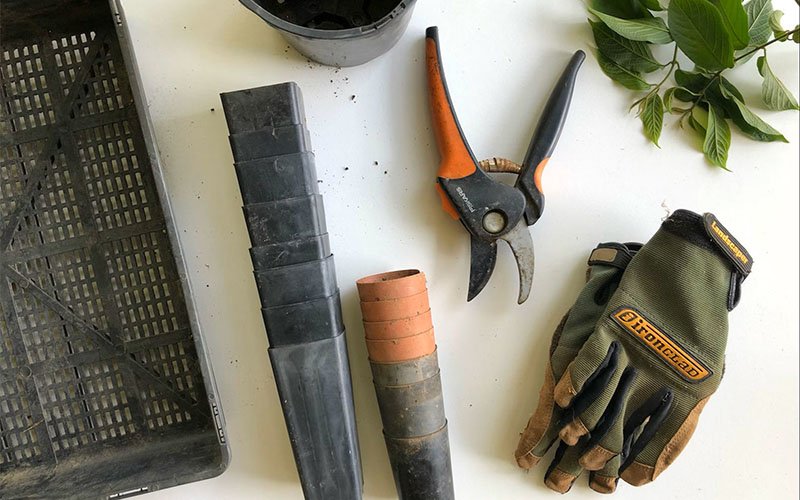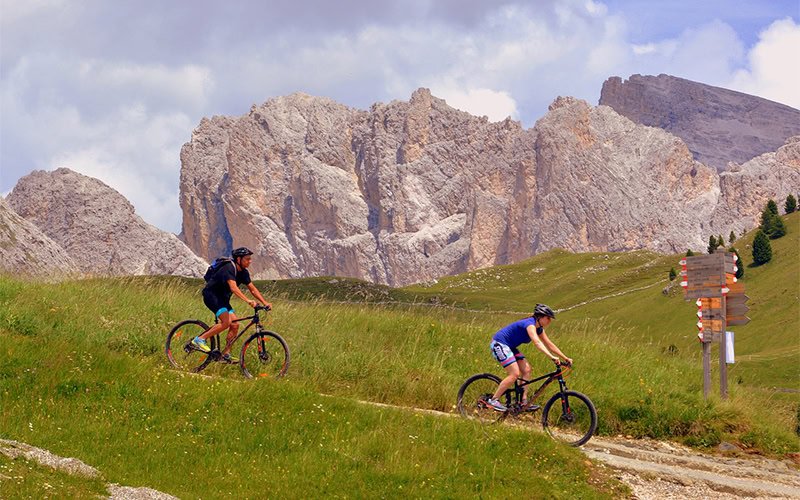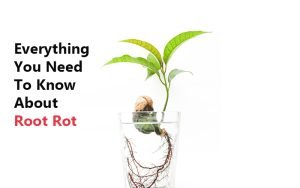Do you love gardening but just don’t have the space for it? Incoming container gardening! What is container gardening – well, as the name suggests, when you use containers to grow your plants, it is called container gardening.
Although both soil and container gardening involves plants, water, and soil, there are some key advantages and disadvantages to growing your plants in a pot versus growing them outside. Let us have a look at some of them:
Pros of container gardening
1. Relocate Anytime Anywhere: You can regulate the amount of sunlight your plants get just by moving them to the perfect spot. Even larger plants and flowers can be moved around if they are kept on wheels.
2. Avoid Contamination: If your other plants are getting contaminated with a fungal infection you can protect your plants by relocating them to a safer spot.
3. Water Doesn’t Drain Through: This is more of a double-edged sword, but sometimes in large garden beds the water seeps down completely before the roots can absorb it. This is why container gardening is especially beneficial for saplings and smaller plants where the container controls the speed with which the water drains through.
4. Can Manage The Pot To Plant Ratio: You can create the perfect ecosystem for your plants by controlling the size of the pot. Here’s a container gardening plant container size chart to give you a better idea:
| Pot Type | Water Capacity | Soil Capacity | Can Grow The Following Flowers |
| Extra Small | 2 Gallons | 0.3 Cubic Feet | Nasturtium, Calendula |
| Small | 3 Gallons | 0.46 Cubic Feet | Peace Lily, Petunia, African Violets |
| Medium | 5 Gallons | 0.69 Cubic Feet | Marigold, Snapdragon |
| Large | 10 Gallons | 1.5 Cubic Feet | Rose, Hibiscus |
| Extra Large | 20+ Gallons | 2.73 Cubic Feet | Sunflower, Canna Lily |
Cons of Container Gardening:
Since gardening is naturally made for the great outdoors, container gardening will have more cons than pros.
1. Prone to Root Rot – Since the water can pass through a small space, container plants are prone to root rot. This is why you must check that your pot has draining holes that are not too big that the soil and water come out of it too quickly and not too small that the water can’t pass through at all. It has to be just right!
2. Requires Frequent Fertilization – Since the pot can hold a limited amount of soil, which loses some nutrients every time you water it, you have to replenish the nutrition more often. Using a liquid or solid fertilizer every few months, depending on the size of your pot and the plant should solve this issue.
3. Prone to be Root Bound – Here is another problem unique to container-based plants. If the plant grows too big for the pot, it becomes root-bound. This means that the roots grow into each other and form a jumbled coil with itself. Root-bound flowers are far more likely to get root rot because of all the bunching in the bottom. How do you prevent your plants from getting root bound? Start observing your plants, because all flowers grow based on the space they get; if you start seeing that the flower has stopped growing or the leaves are becoming smaller and yellow, you must plant the flower into a bigger pot. Always break the potted outline of the roots, especially in the bottom, to open them up and prepare them to grow into the new pot.
4. Pot to Plant Ratio Has To Be Perfect – Unlike planting flowers in the garden, you always have to be watchful of the plant-to-pot ratio. A plant that’s too big for the pot can get root bound, root rot and insufficient nutrition. On the other hand, a plant that’s too small for the pot will not have sufficient roots to get a grip and hold the water. Hence the plant-to-pot ratio has to be perfect. As a good rule of thumb, the pot needs to be half the length of the plant. Anything too tall or too short can affect the plant’s growth.
These are good tips for container gardening for beginners. With a few key points and some handy beginner tools, you can build an excellent container garden for yourself.
Flower Container Gardening For Beginners – Things To Keep In Mind
Flower gardening is a little more advanced than regular plants. So, if you have never gardened before, you should start by container gardening other plants or flower gardening outdoors. Here’s a list of the 10 Best Garden Plants for Beginners to start off your journey.
However, if you are experienced with planting non-flowering plants, you can start with these simple tips for the best results in flower container gardening:
1. Pick The Right Flowering Plants

Since it is far more difficult for a flowering plant to sustain in a pot, you should go for sturdier flowering plants. The following flowering plants do well in a pot as long as they get a full sun. Some of these can withstand a period of drought as well:
- Pentas
- Lantana
- Plumbago
- Moonflower
- Hibiscus
- Moss Rose
- Blanket Flower
- King’s Mantle
- Mandevilla
- Bottlebrush
- Marigold
- Angelonia
- Canna Lily
- Desert Rose
- Cock’s Comb
- Petunia
Since these plants need a good amount of sunlight you can position them near the window or the veranda and they will do pretty well there.
On the other hand, these are some shade-loving flowering plants:
- Begonias
- Impatiens
- Coleus
- Fuchsia
Although they do need a few hours of sunlight every day, they usually thrive under the shade, indirect sunlight, or morning/evening sunlight.
You can also pick a plant based on their lifespan. There are 3 types of flowering plants – annual, biennial, and perennial plants. Annual plants are those that complete their life cycle within a single growing season. Many popular flowering plants are annual plants like marigolds, petunias, cosmos, etc. Biennial plants are those that have a 2-year lifespan, often flowering in their second year. Not many flowering plants are biennial. Some good examples are the Canterbury bells, dianthus, foxglove, etc. Lastly, perennial plants are those that become strong after their first year and can live for more than 2 years. Examples of perennial flowering plants are chrysanthemums, dahlia, salvia etc.
As a beginner, it is best to start off with annual flowering plants. Since they complete their life cycle in a single season, they do not have very intense requirements. As long as you plant them in the right pot, with the right soil, water them, and add fertilizer every few months, they should have a good bloom.
2. Pick The Pot Material

Pots and containers come in different materials. They can be made of plastic, metal, clay, wood, terra cotta, etc. Earthen pots are usually the best for container gardening because they replicate the texture of hard soil. Metal tends to overheat, which might damage the plant’s roots if exposed to the harsh sun for long periods. If you use a wooden pot, make sure you use a variety that is resistant to rot. Lastly, terra cotta pots can crack and get damaged in the harsh winter and hence should not support biennial and perennial plants.
The type of pot you choose makes a massive difference to the growth and overall health of your flowering plant.
3. Make Sure There’s Good Drainage
You can manage the drainage in two ways:
- Creating well-draining soil – the soil should be nutrient-rich, but have a healthy mixture of sand, clay, and perlite, and a combination of these will create a well-draining soil that protects the roots from getting damaged.
- Adding adequate drainage holes in the pot – As mentioned earlier too many drainage holes might cause the water to drain out too quickly. So if you are using a more sturdy pot material – like terra cotta, or earthen pots make sure to ask your seller to make one hole in the bottom and later cover it with a rock to make sure the drainage is slow but consistent.
With these tips in mind, you can succeed in flower container gardening, even as a beginner. All the best in your gardening journey. We hope these tips for flower container gardening for beginners gives you the confidence to venture on this journey.















